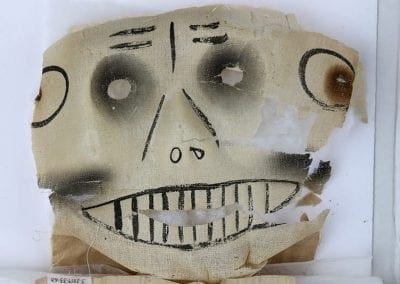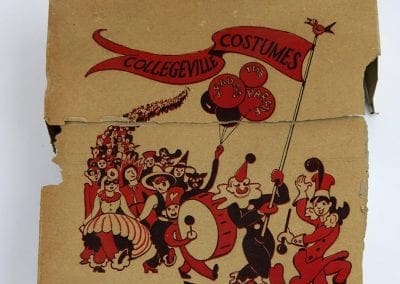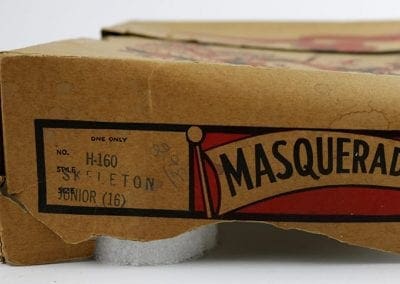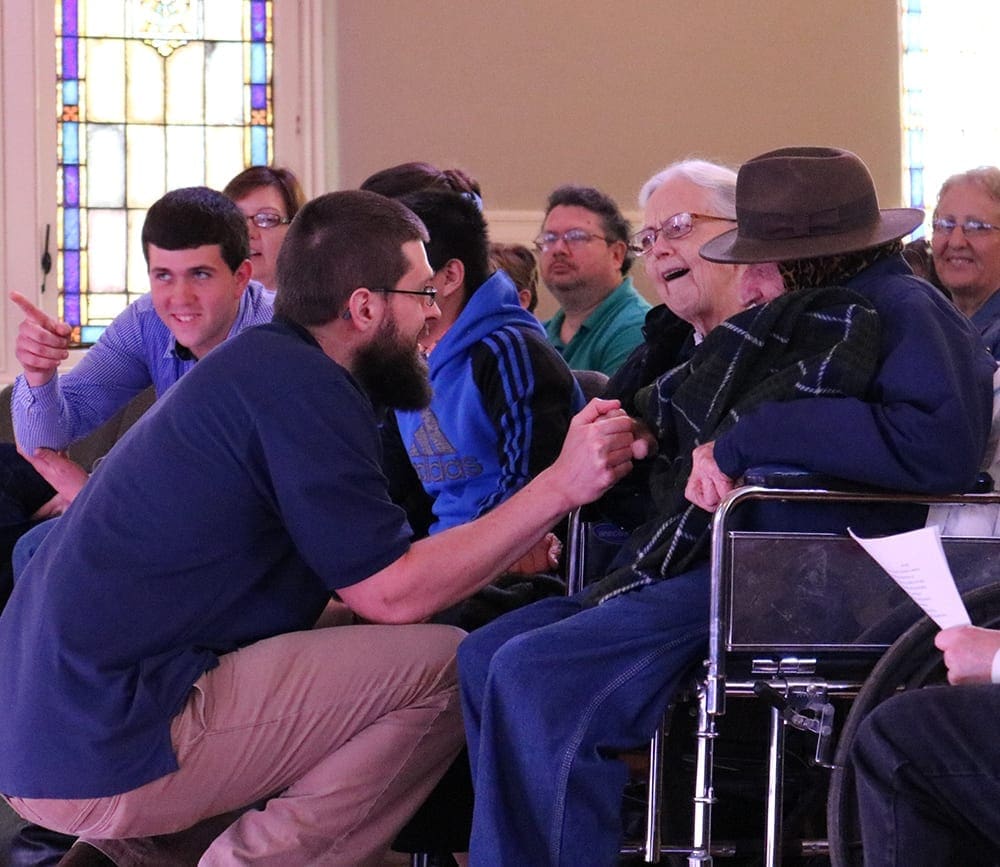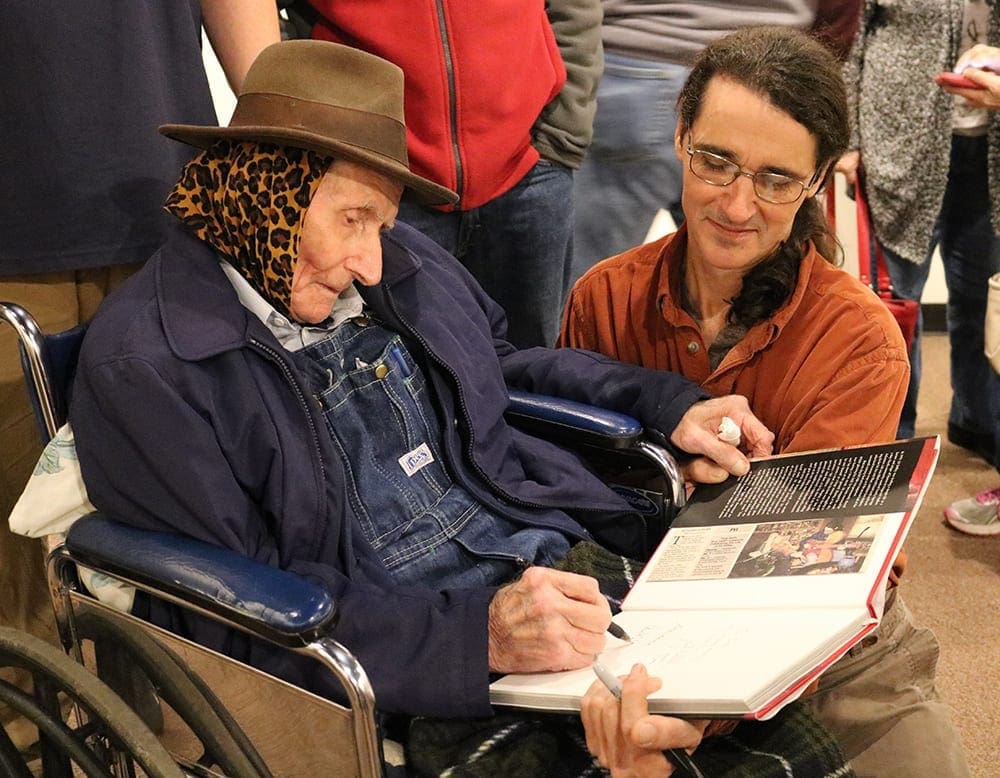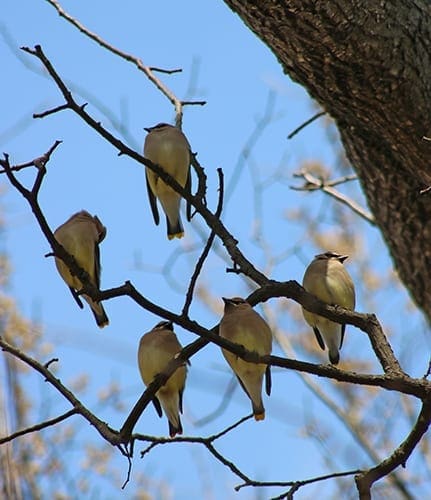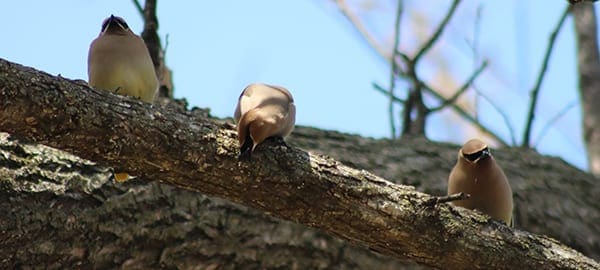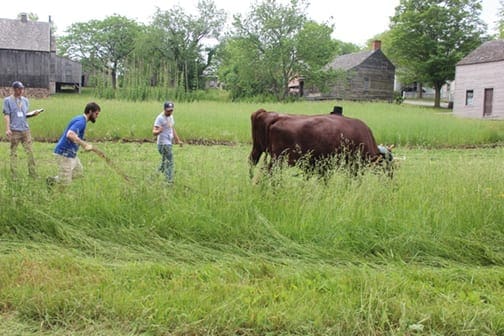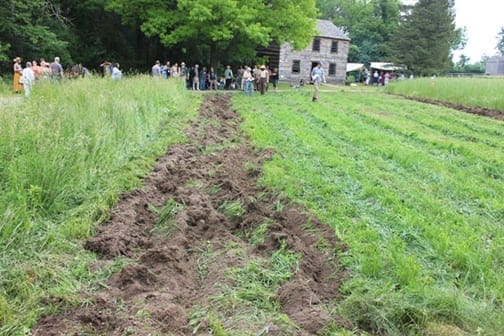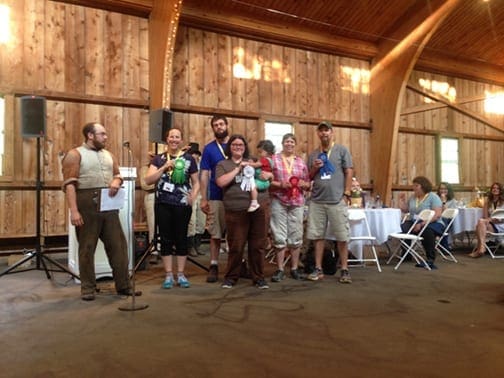A Skeleton in Our (Collections) Closet
This skeleton costume was donated by the estate of longtime Hindsville (Madison County) resident Patricia Laird Vaughan. She married James Vaughan, whose family first came to Madison County in 1831. In addition to farming, raising cattle, and running one of the largest fescue seed operations in Arkansas, James and Patricia Vaughan also owned and operated two well-known Hindsville businesses: the Valley Inn Café and Vaughan Valley Antique Shop.
The costume box is stamped as size “Junior (16)” with a penciled-in cost of $2.98. Unfortunately, we do not know if this costume was worn by a child in the Vaughan family, or if it was a item the Vaughans had for sale in their antique store.
According to many sources the practice of “trick or treating” began with a Celtic tradition. The Celts thought that by dressing up as evil spirits, they would be protected if they happened to encounter a demon who roamed the earth as we moved from one year to the next. The term “trick or treating” has a much more recent history. According to Smithsonian magazine, the earliest known printed reference is found in a November 1927 edition of the Blackie Herald (Alberta, Canada):
Hallowe’en provided an opportunity for real strenuous fun. No real damage was done except to the temper of some who had to hunt for wagon wheels, gates, wagons, barrels, etc., much of which decorated the front street. The youthful tormentors were at back door and front demanding edible plunder by the word “trick or treat” to which the inmates gladly responded and sent the robbers away rejoicing.
In 1909, Samuel Cornish founded the Collegeville Manufacturing Company in Collegeville, Pennsylvania. The company first made aprons, but soon began making American flags as well. In 1923, they further expanded to include making inexpensive Halloween costumes using fabric remnants from the flag-making process. Soon costume-making became a dedicated branch of the Cornish enterprise as the Collegeville Costume Company.
Throughout the years, Collegeville’s line of costumes included pop culture figures of the day. The 1976 Collegeville catalog featured costumes celebrating the Bicentennial and related to the blockbuster movie Jaws. During the 1980s, Peanuts and Transfomers characters were popular Collegeville costumes. Today, Collegeville no longer makes Halloween costumes, but the Cornish family still operates a retail costume store in Royersford, Pennsylvania.
Aaron Loehndorf is the Shiloh Museum’s collections and education specialist.
This skeleton costume was donated by the estate of longtime Hindsville (Madison County) resident Patricia Laird Vaughan. She married James Vaughan, whose family first came to Madison County in 1831. In addition to farming, raising cattle, and running one of the largest fescue seed operations in Arkansas, James and Patricia Vaughan also owned and operated two well-known Hindsville businesses: the Valley Inn Café and Vaughan Valley Antique Shop.
The costume box is stamped as size “Junior (16)” with a penciled-in cost of $2.98. Unfortunately, we do not know if this costume was worn by a child in the Vaughan family, or if it was a item the Vaughans had for sale in their antique store.
According to many sources the practice of “trick or treating” began with a Celtic tradition. The Celts thought that by dressing up as evil spirits, they would be protected if they happened to encounter a demon who roamed the earth as we moved from one year to the next. The term “trick or treating” has a much more recent history. According to Smithsonian magazine, the earliest known printed reference is found in a November 1927 edition of the Blackie Herald (Alberta, Canada):
Hallowe’en provided an opportunity for real strenuous fun. No real damage was done except to the temper of some who had to hunt for wagon wheels, gates, wagons, barrels, etc., much of which decorated the front street. The youthful tormentors were at back door and front demanding edible plunder by the word “trick or treat” to which the inmates gladly responded and sent the robbers away rejoicing.
In 1909, Samuel Cornish founded the Collegeville Manufacturing Company in Collegeville, Pennsylvania. The company first made aprons, but soon began making American flags as well. In 1923, they further expanded to include making inexpensive Halloween costumes using fabric remnants from the flag-making process. Soon costume-making became a dedicated branch of the Cornish enterprise as the Collegeville Costume Company.
Throughout the years, Collegeville’s line of costumes included pop culture figures of the day. The 1976 Collegeville catalog featured costumes celebrating the Bicentennial and related to the blockbuster movie Jaws. During the 1980s, Peanuts and Transfomers characters were popular Collegeville costumes. Today, Collegeville no longer makes Halloween costumes, but the Cornish family still operates a retail costume store in Royersford, Pennsylvania.
Aaron Loehndorf is the Shiloh Museum’s collections and education specialist.


